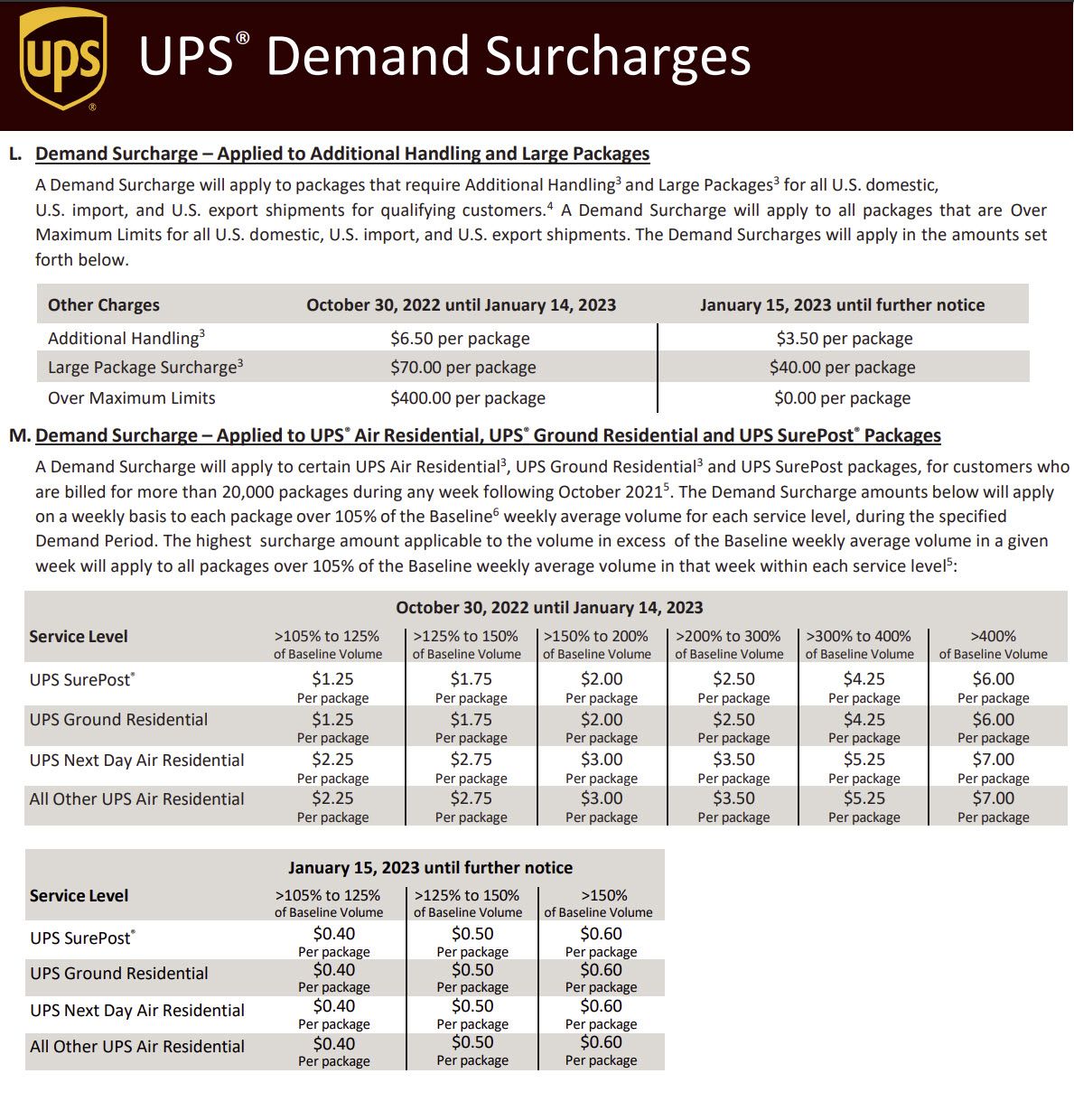UPS Surcharges Extend Beyond Peak Season, Get New Name
UPS extends residential peak surcharges past their usual date in mid-January and renames them as "demand" surcharges, leaving the door open for indefinite extension.

In an unprecedented move, UPS Inc. will impose U.S. residential delivery surcharges beyond the peak delivery season instead of letting the levies fall away in mid-January.
The Atlanta-based carrier has also done away with the word “peak” in its description of surcharges and will now just call them “demand” surcharges. The carrier’s rationale is that the two words can be used interchangeably.
In a statement, UPS said the surcharges “help protect our network and ensure UPS receives appropriate compensation for additional costs to maintain our high-quality service against the backdrop of dynamic market conditions.” It posted the surcharges on its website Thursday...
...The surcharges, which take effect Jan. 15 and remain until further notice, will not be nearly as onerous as the levies applied during the traditional peak cycle, which started Oct. 30 and will end Jan. 14. For example, depending on the average weekly volumes tendered either during most of June or in September 2022, the surcharges will range from 40 cents per package for lower-volume residential shippers to 60 cents per package for the highest volume customers...
...The new UPS surcharges will be levied against shippers that tender more than 20,000 weekly residential parcels during any week after October 2021. The surcharges will apply to the carrier’s next-day air and ground residential deliveries, a category known as “all other” air residential deliveries which typically mean deliveries on the second day, and UPS’ “SurePost” service which it manages in conjunction with the U.S. Postal Service.
The surcharges will apply on each product as long as the shipper exceeds the 20,000-parcel aggregate threshold.
UPS will keep surcharges on shipments that are oversized or require “additional handling,” the latter defined as shipments that aren’t compatible with its automated processing network. Those fees will also be much lower than during the traditional peak cycle, and will effectively return to pre-peak levels.
Full new UPS Demand Surcharges can be found here.
Excerpt:



















